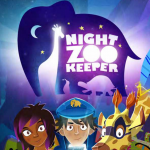Digital For Good starts with an interesting observation. Us parents grew up in the physical world. Our children, meanwhile, are growing up in both the physical and online worlds. It’s up to us mums and dads to help them learn about these worlds and navigate them.

The book’s author, Richard Culatta, has come up with five qualities every young person needs to learn. To be a “thriving, contributing member of the digital world,” Culatta says youngsters need to:
- Be balanced
- Stay informed
- Be inclusive
- Be engaged and
- Stay alert.
In 256 pages, Culatta outlines how he believes youngsters can achieve this. You, however, probably want to know who Culatta is and whether he genuinely is an authority on the digital world, online safety and digital resilience.
The short answer is, yes, he knows a thing or two about the digital world. Not only is he the Chief Executive of the International Society for Technology in Education, but he was appointed to lead the United States Department of Education’s Office of Educational Technology during Barack Obama’s administration. I think it’s fair to say he’s something of a big deal (and this probably explains why this book was published by the Harvard Business Review Press).
Digital For Good begins with Culatta explaining how his grandfather was limited to communicating with people via telephone and even then, the phone generally connected people who knew each other already. Culatta’s own son, meanwhile, can connect with more people in a day than his grandfather did in a lifetime, thanks to the development on the Internet.
The dilemma is that we, as a society, have raced to place as many activities online as possible (a situation accelerated by COVID) yet we never established any ground rules. The result has been an Internet where there’s no expectation of acceptable behaviour and near complete anonymity, as any high-profile individual or dick pic recipient will attest.
In the first chapter Our Digital Dysfunction, Culatta outlines the key sources of where the web has gone wrong: Advertising (which young children do not have the cognitive ability to recognise or compute), exploitation and abuse (brought to life with the heartbreaking story of Amanda Todd, a Canadian girl who took her own life after being persuaded to dance topless by a cyber stalker), individuals representing themselves online in an unrealistic and sugar-coated way and eroding civility, or posting fake news and rigging elections.
So far, so academic. In many respects, you could be forgiven for thinking “What has this got to do with the price of fish?” If you have a nine year-old and are umming and ahhhing over whether to get them a mobile phone, you might find this book’s view a bit academic in nature.
This is a fair comment. Hidden among the pages, however, is buckets of information parents could and should make use of.
The reader is encouraged to draw a distinction between good screen time and bad screen time. Watching endless unboxing activities on YouTube will do nothing for your child’s development. Playing Minecraft (with some ground rules of course) encourages creative thinking, can be social and requires reasoned thought. In fact Culatta compares Minecraft to LEGO, saying both rely on very similar skills.
Digital For Good also features lots of personal anecdotes from the author and at the end of most chapters are conversation starters and actions that readers can undertake with their children.
At the end of the chapter called Balance (chapter three) readers are encouraged, as an action point, to hold an app review with their kids. If an app is causing problems or doesn’t provide value, parents and child are to come up with a deadline for replacing the app with a healthier alternative. As for conversation starters, among the suggestions is a proposal that you ask your children when you know it’s time to take a break from an app.
The book concludes with a statement about the future of the digital world and how it is in our hands and our children’s to ensure digital technology is used for good. It’s a very compelling statement and a great summary of the entire title.
To sum up, this book is slightly academic in nature. Don’t let that put you off though. It is accessible and full of relatable anecdotes and practical ideas for encouraging positive use of digital devices. It is a really good read if a little heavy in places but I enjoyed the book a great deal.
I also feel Culatta is absolutely right. The rules and etiquette for using the online world were never truly formed. We have an opportunity to adopt the Digital For Good mantra and ensure our kids have good habits and behave appropriately in the digital work in which they will inevitably be living.
Digital For Good, raising kids to thrive in an online world by Richard Culatta is published by Harvard Business Review Press. It is on general release so available from all good book retailers and had a cover price of £20.99.






